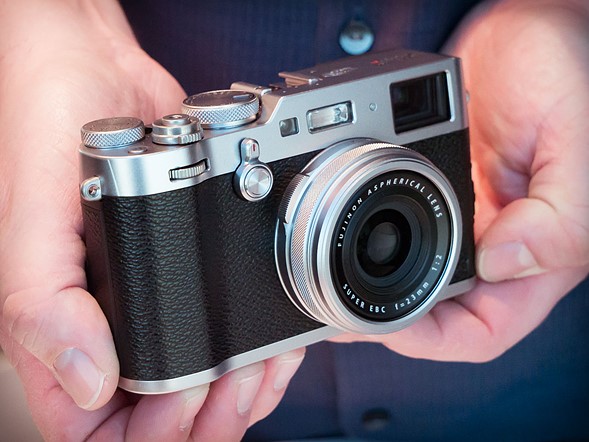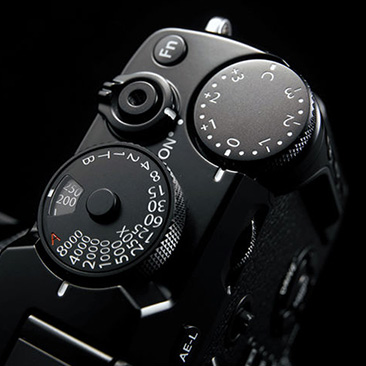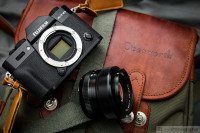
Hands-on with Fujifilm X100F Fujifilm has announced the fourth in its series of X100 rangefinder-style cameras: the X100F. The X100F features an updated sensor, revamped autofocus system, larger battery and tweaked ergonomics.
We met with Fujifilm recently and got our hands on a pre-production sample. Click through for a quick product tour.
Hands-on with Fujifilm X100F
Superficially very similar to its predecessor, the X100F is a clear evolution of the X100-series lineup in terms of design. The most obvious difference between the two cameras from the front is the X100F's new front control dial, which brings the total dial-count to three.
Hands-on with Fujifilm X100F
Here's a closer look at that dial, and next to it the viewfinder mode selector lever, which toggles the hybrid finder between optical and electronic viewing modes. The 23mm (35mm equivalent) F2 prime lens is the same design as the X100T (and X100S and X100) and can accept the same telephoto and wide-angle adapters.
However, new 'Mark II' versions of these adapters have been released alongside the X100F. We understand that the Mark II versions are optically identical but feature electronic contacts which match contacts on the X100F camera body, meaning that the camera can recognize when an adapter has been fitted and respond accordingly.
Hands-on with Fujifilm X100F
The X100F's rear control layout has been simplified compared to the X100T, and the controls have been slightly rearranged. The LCD screen is the same, but controls are now arranged on the right of the display, with an AF selection joystick added at upper-right. Essentially the same control that we've seen added in the X-Pro2 and X-T2, this should make changing AF points much easier than it was been in previous X-series models.
The AF system has been revamped, too. The X100F now features 91 user-positionable AF points (which can be more finely divided into 325, if you prefer), with 40% of the imaging area covered by a hybrid phase-detection autofocus array, and focus should be responsive down to -3EV.
Hands-on with Fujifilm X100F
Another change, but arguably a less impactful one is the addition of an integrated ISO dial to the shutter speed dial on the X100F's top-plate. This matches the same dial on the X-Pro2. It looks nice, but we suspect that for many users it will stay locked on the 'A' position most of the time.
This view also shows off the expanded exposure compensation range of +/-3EV on the dedicated exposure compensation dial (upper right). The 'C' position allows exposure compensation of up to +/-5EV, using the camera's control dials.
Hands-on with Fujifilm X100F
The X100F gains a new battery – the same NP-W126S that's used in the X-Pro2, X-T2 and X-T20. Battery life is rated at between 270 and 390 shots (CIPA) depending on whether you mostly use the electronic or optical finder. As always, these figures only give a value that can be compared between cameras; in real-world usage you'll probably get more than this.
The bigger battery means a slightly deeper camera, and this increased size makes the X100F feel a little more solid and businesslike compared to the previous models.
Hands-on with Fujifilm X100F
The X100F will be available in silver or black, shipping next month for $1299.
. dpreview.com2017-1-19 08:30















